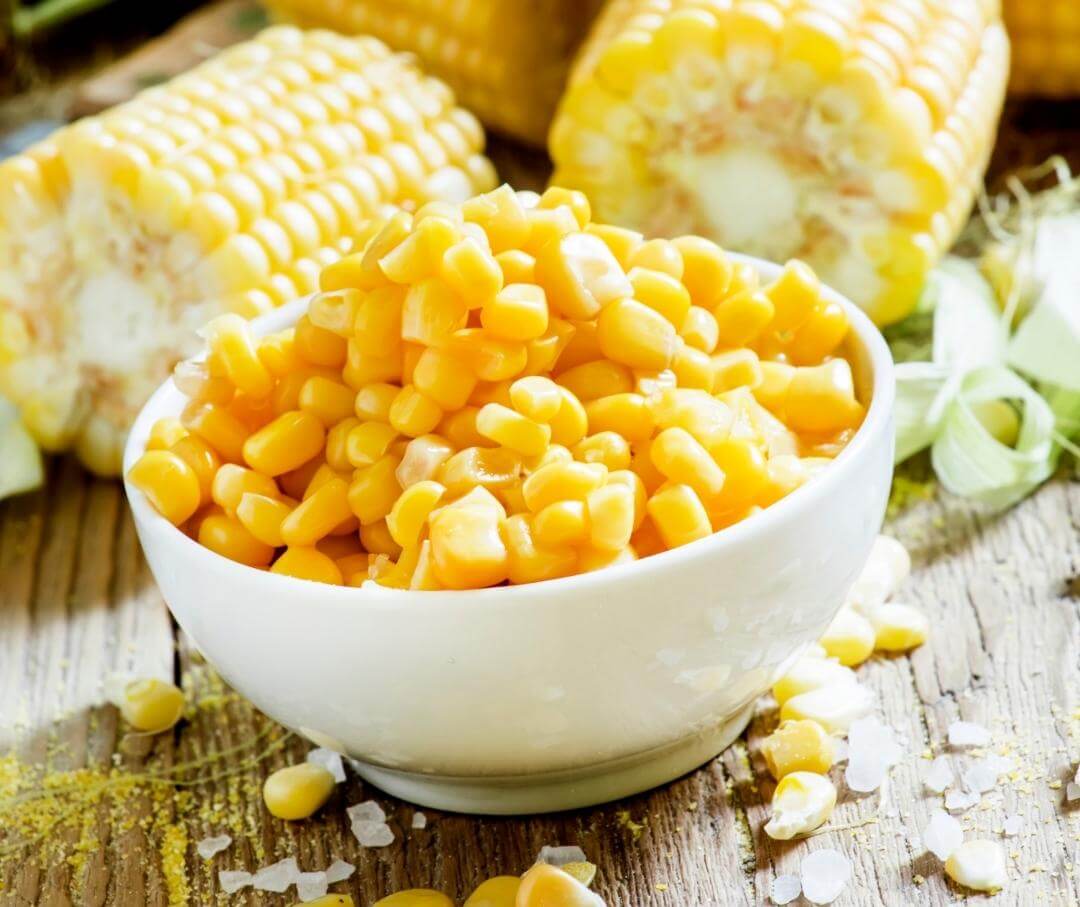Nutritional yeast is an inactivated form of yeast that is used to make bread or beer. It has a savory or umami flavor, often described as nutty or cheesy.
Nutritional yeast has become increasingly popular along with the rise of plant-based diets.
It comes in powder or flakes and is an excellent source of many vitamins and minerals that may have several health benefits, including lowering cholesterol, improving immune health, and more.
While adding nutritional yeast to your diet could provide some benefits, there may also be some negative side effects associated with consuming it.
What is Nutritional Yeast?
Nutritional yeast, sometimes called “nooch,” is a species of yeast known as Saccharomyces cerevisiae, the same kind of yeast used to brew beer and bake bread. However, nutritional yeast comes in a deactivated form.
There are two types of nutritional yeast — unfortified and fortified:
- Unfortified - Does not contain any added vitamins or minerals. It only contains the vitamins and minerals naturally produced by the yeast cells as they grow.
- Fortified - Contains synthetic vitamins added during manufacturing to boost the nutrient content. Any added nutrients are included in the ingredient list.
Fortified nutritional yeast is the most commonly used type and offers the most nutritional benefit.
Nutritional yeast is packaged and sold as thin flakes, granules, or powder. It is found in most grocery stores' spice or condiment sections or in bulk bins at health food stores.
Nutritional yeast suits almost any diet or eating style. It is low in sodium and calories, plus it’s fat-free, sugar-free, gluten-free, and vegan.
{{mid-cta}}
Key Nutrition Facts
Nutritional yeast is a plant-based source of protein and B vitamins. This is one of the reasons it is popular among vegans and vegetarians.
One serving (2 teaspoons) of fortified nutritional yeast contains:
- Calories: 20
- Protein: 3 grams
- Fat: 0 grams
- Carbs: 2 grams
- Sugar: 0 grams
- Fiber: 4% of the Daily Value (DV)
- Riboflavin (vitamin B2): 246% of the DV
- Niacin (vitamin B3): 109% of the DV
- Vitamin B6: 212% of the DV
- Folate (vitamin B9): 59% of the DV
- Vitamin B12: 313% of the DV
- Iron: 2% of the DV
- Potassium: 2% of the DV
Nutritional Yeast vs. Brewer’s Yeast
Brewer’s yeast is used to brew beer. The yeast cells left behind after the brewing process may be taken as a nutritional supplement, but they taste very bitter.
Nutritional yeast is grown specifically for use as a food product. The yeast cells are killed during manufacturing, which makes this yeast inactive. It’s used in cooking as a seasoning or a topping, offering a savory flavor often described as nutty or cheesy.
8 Potential Side Effects of Nutritional Yeast
1. May cause uncomfortable gastrointestinal side effects
The high fiber content of nutritional yeast can cause digestive upset if you aren’t used to consuming a high-fiber diet. Introducing too much fiber too quickly can lead to stomach discomfort like cramps or diarrhea.
Introduce nutritional yeast gradually and consume plenty of fiber to avoid this unpleasant side effect.1,2
2. May trigger headaches or migraines
Nutritional yeast is a great source of many nutrients, including vitamin B-12 and zinc; however, some yeast products contain tyramine, which may cause migraine attacks in some people.
Most individuals can consume foods that contain tyramine without any negative side effects.
However, some studies show that tyramine may cause migraine attacks in certain people. People who suffer from migraines may want to avoid nutritional yeast for this reason.3
3. May produce facial redness
Nutritional yeast contains high amounts of niacin. Consuming large amounts of niacin may cause facial redness or flushing.
Consuming a few servings of nutritional yeast would not likely cause facial flushing. It would typically happen after the intake of very large doses.
Although facial flushing is not associated with harm, consuming large doses of niacin may cause other potentially harmful side effects.4
4. Can worsen gout symptoms
Some nutritional yeasts and yeast extracts contain purines which increase uric acid concentration in the blood. This is what causes or worsens gout symptoms. People with gout should follow a low-purine diet and avoid nutritional yeast.5
5. Yeast intolerance and inflammatory bowel disease
Some people may be intolerant of nutritional yeast; however, this is fairly uncommon. Some studies suggest that consuming nutritional yeast may aggravate or contribute to symptoms in some people who live with inflammatory bowel disease (IBD).6

6. May foster existing yeast infections
It has been suggested that consuming nutritional yeast may feed existing yeast infections; however, there is insufficient evidence from research to support this.
Since nutritional yeast is inactivated and the cells are not living, it should not cause or worsen yeast infections such as Candida albicans overgrowth.7
7. May contain other additives and/or mold toxins
In addition to being fortified with nutrients that aren’t naturally found in nutritional yeast, other ingredients, such as rice flour, salt, and emulsifiers, may be added to nutritional yeast during manufacturing.
One study showed that traces of mold (Ochratoxin A) were found in brewer’s yeast used as a food supplement. To avoid contaminated yeast, choose lab-tested products from reputable brands.8
8. May interact with certain medications
The tyramine in nutritional yeast may interact with certain medications, including monoamine oxidase inhibitors (MAOIs) used to treat depression, some narcotics that treat severe pain, and antifungal drugs. Nutritional yeast is also not recommended for people taking drugs to treat diabetes.9
7 Potential Health Benefits of Nutritional Yeast
Despite the possible downsides of consuming nutritional yeast, there are also many proven benefits of including it in the diet.
- Good source of fiber
One tablespoon of nutritional yeast has 2 grams of fiber, but eating four or five tablespoons adds up to 20 to 25 percent of the recommended daily value.
What’s really beneficial is the type of fiber it contains. Nutritional yeast is rich in beta-glucan. Many of the health benefits of consuming nutritional yeast are related to this special kind of fiber.10
- Packed with vitamin B12
Nutritional yeast is packed with vitamin B12, an essential nutrient that is usually found only in animal products. Because of this, nutritional yeast is a staple in the diets of those following vegan or vegetarian diets.
Vitamin B12 is essential for healthy blood and nerve cells. It also helps make DNA and prevent megaloblastic anemia, a blood condition that makes you feel weak and fatigued.11
- It’s a complete protein
Nutritional yeast is a complete protein containing all nine essential amino acids that the body cannot make on its own. It is an excellent source of plant-based protein for vegans and vegetarians.
- It’s low in sodium
Nutritional yeast is suitable for any diet, including those who need to be mindful of sodium intake for blood pressure and heart health considerations. It’s a great way to add savory flavor to dishes without the added sodium.
- Promotes heart health
Studies show that nutritional yeast contains powerful antioxidants like glutathione and selenomethionine. These antioxidants have been shown to reduce the risk of chronic disease and promote heart health.12
The beta-glucan in nutritional yeast may also help lower cholesterol levels, which may benefit heart health.13
- Supports the immune system
Nutritional yeast has two main carbohydrates: alpha mannan and beta-glucan.
Animal studies suggest these carbs offer antibacterial and antifungal benefits, which may protect your body from infections. Beta-glucan is believed to work by activating immune cells and targeting the gut microbiome to support immunity and overall health.14,15
More research is needed to support this.
- Boosts physical recovery
Nutritional yeast might help boost recovery after a hard workout. Studies have found that athletes who consumed yeast products with beta-glucan experienced less post-workout fatigue and better moods than those who didn't. Researchers believe yeast restores white blood cells that are lost during exercise.16
How Can You Use Nutritional Yeast?
Nutritional yeast is generally used as a nutritional supplement and a flavor enhancer. There are many ways to incorporate nutritional yeast into the foods you’re already eating. Some ways to use nutritional yeast include:
- Add to rice and pasta dishes
- Sprinkle over popcorn for a cheese, savory flavoring (without the sodium and fat of butter and salt)
- Add to soups and gravies
- Use as a sauce thickener
- Sprinkle over salads

Nutritional Yeast Substitutes to Try Out
If you fall into the category of people who may want to avoid nutritional yeast (i.e., migraine sufferers, people with gout, and people with IBD), there are plenty of other foods you can consume to achieve the same health benefits.
For the flavor, try grass-fed milk, cream, cheese, yogurt, ghee, or coconut milk instead of nutritional yeast.
For the nutrients, go for grass-fed meat or pastured eggs. If you’re vegan, reach for nutrient-packed sources of B vitamins like almonds, dark leafy greens, and avocados.
4 FAQs Around Nutritional Yeast
How much nutritional yeast can you eat per day?
It’s typically safe to consume nutritional yeast in moderation. Most people can tolerate several tablespoons (10 to 30 grams) daily. You would have to consume pretty significant amounts of nutritional yeast to exceed the tolerable upper intake levels (UL) for the various vitamins and minerals it contains.
Can too much nutritional yeast be harmful?
When used in large doses, nutritional yeast may cause digestive discomfort or facial flushing due to its high fiber and niacin content. Nutritional yeast may also contain tyramine, which may trigger migraine headaches in some people.
Should I refrigerate nutritional yeast?
You don’t have to store nutritional yeast in the fridge, but you can. Keep nutritional yeast in a jar on the countertop or in a cool, dark place like a pantry. When stored correctly, nutritional yeast should last about two years.
How should I store nutritional yeast?
Keep nutritional yeast in an airtight container and store it in a cool, dry place.
Learn More About Nutrition and Healthy Eating with Signos’ Expert Advice
Signos is a great resource for expert advice on nutrition and healthy eating. Signos has a team of registered dietitians who compile evidence-based nutrition information to help you improve your health and wellness. Check out the resources here.
Signos CGM empowers you to improve your health by keeping track of your diet, exercise, sleep habits, and blood sugar. Knowledge is power, and a CGM can give you specific information about how your habits affect your health.
Find out if Signos is a good fit for you by taking a quick quiz.
- Item 1
- Item 2
- item 3
Topics discussed in this article:
References
- Yang J, Wang HP, Zhou L, Xu CF. Effect of dietary fiber on constipation: a meta analysis. World J Gastroenterol. 2012;18(48):7378-7383. doi:10.3748/wjg.v18.i48.7378
- Markland AD, Palsson O, Goode PS, Burgio KL, Busby-Whitehead J, Whitehead WE. Association of low dietary intake of fiber and liquids with constipation: evidence from the National Health and Nutrition Examination Survey. Am J Gastroenterol. 2013;108(5):796-803. doi:10.1038/ajg.2013.73
- Moffett A, Swash M, Scott DF. Effect of tyramine in migraine: a double-blind study. J Neurol Neurosurg Psychiatry. 1972;35(4):496-499. doi:10.1136/jnnp.35.4.496
- Dunbar RL, Gelfand JM. Seeing red: flushing out instigators of niacin-associated skin toxicity. J Clin Invest. 2010;120(8):2651-2655. doi:10.1172/JCI44098
- Jakše B, Jakše B, Pajek M, Pajek J. Uric Acid and Plant-Based Nutrition. Nutrients. 2019;11(8):1736. Published 2019 Jul 26. doi:10.3390/nu11081736
- van den Bogaerde J, Kamm MA, Knight SC. Immune sensitization to food, yeast and bacteria in Crohn's disease. Aliment Pharmacol Ther. 2001;15(10):1647-1653. doi:10.1046/j.1365-2036.2001.01032.x
- Jeziorek M, Frej-Mądrzak M, Choroszy-Król I. The influence of diet on gastrointestinal Candida spp. colonization and the susceptibility of Candida spp. to antifungal drugs. Rocz Panstw Zakl Hig. 2019;70(2):195-200. doi:10.32394/rpzh.2019.0070
- Gottschalk C, Biermaier B, Gross M, Schwaiger K, Gareis M. Ochratoxin A in brewer's yeast used as food supplement. Mycotoxin Res. 2016;32(1):1-5. doi:10.1007/s12550-015-0230-x
- Flockhart DA. Dietary restrictions and drug interactions with monoamine oxidase inhibitors: an update. J Clin Psychiatry. 2012;73 Suppl 1:17-24. doi:10.4088/JCP.11096su1c.03
- Ciecierska A, Drywień ME, Hamulka J, Sadkowski T. Nutraceutical functions of beta-glucans in human nutrition. Rocz Panstw Zakl Hig. 2019;70(4):315-324. doi:10.32394/rpzh.2019.0082
- Lederer AK, Hannibal L, Hettich M, et al. Vitamin B12 Status Upon Short-Term Intervention with a Vegan Diet-A Randomized Controlled Trial in Healthy Participants. Nutrients. 2019;11(11):2815. Published 2019 Nov 18. doi:10.3390/nu11112815
- Serafini M, Peluso I. Functional Foods for Health: The Interrelated Antioxidant and Anti-Inflammatory Role of Fruits, Vegetables, Herbs, Spices and Cocoa in Humans. Curr Pharm Des. 2016;22(44):6701-6715. doi:10.2174/1381612823666161123094235
- Sima P, Vannucci L, Vetvicka V. β-glucans and cholesterol (Review). Int J Mol Med. 2018;41(4):1799-1808. doi:10.3892/ijmm.2018.3411
- Moorlag SJCFM, Khan N, Novakovic B, et al. β-Glucan Induces Protective Trained Immunity against Mycobacterium tuberculosis Infection: A Key Role for IL-1. Cell Rep. 2020;31(7):107634. doi:10.1016/j.celrep.2020.107634
- van der Meer JW, Joosten LA, Riksen N, Netea MG. Trained immunity: A smart way to enhance innate immune defence. Mol Immunol. 2015;68(1):40-44. doi:10.1016/j.molimm.2015.06.019
- Carpenter KC, Breslin WL, Davidson T, Adams A, McFarlin BK. Baker's yeast β-glucan supplementation increases monocytes and cytokines post-exercise: implications for infection risk?. Br J Nutr. 2013;109(3):478-486. doi:10.1017/S0007114512001407
































